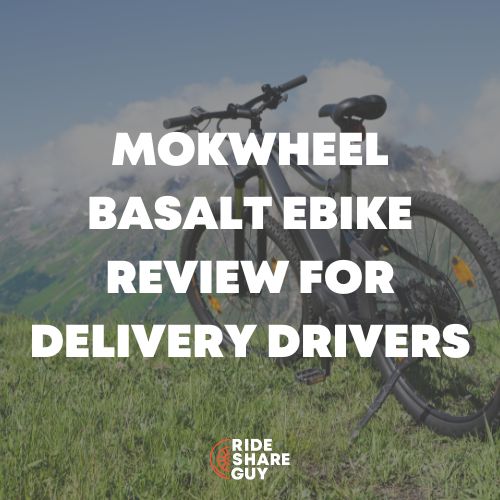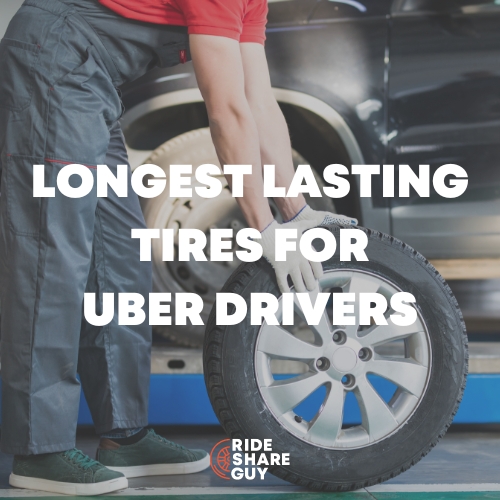As rideshare drivers, we are perhaps more aware of road safety than any other driver on the road. We have to pay attention to a myriad of things going on at once, from road and weather conditions to app notifications and our passengers’ general well-being. Truck drivers face perhaps some of the biggest risks while on the road. Below, RSG contributor-at-large Jon Knope covers the true story of Ed Slattery and the book The Long Blink below.
Every driver is aware, to some extent, that each time they get behind the wheel could be their last. Often this awareness is most present when we are first learning to drive. After many years, the magnitude of our responsibility to our passengers and fellow motorists may fade slightly, but for most of us it never leaves.
For folks like Ed Slattery, I can only imagine that this awareness shadows him at every turn. In The Long Blink, journalist Brian Kuebler traces the story of Ed’s life following a fatal truck crash. Ed was at work while his wife Susan and their two sons, Peter and Matthew, travelled home from a family reunion. After a series of phone calls, Ed learns that his family was in a serious truck accident. Susan was killed, and his sons critically injured. Peter eventually recovered but Matthew was left with permanent disabilities.
It’s a truly harrowing story, and it’s even scarier to imagine how any one of us could suddenly find ourselves in similar circumstances. The author exposes Ed’s reality of living with this massive emotional trauma in gripping detail, as well as Ed’s fight to make our roads safer and give his disabled son a better life. Once you start reading this book, it’s hard to look away; and no matter what kind of driving you do, it’s an important read. Make sure to enter the giveaway below for your chance to win your own copy of The Long Blink.

Ed Slattery and the Truck Safety Coalition
As a truck driver and full-time resident of American highways, I was most interested in how Ed tried to improve the industry’s safety standards following the crash. Ed’s most public effort was in 2011 when he attended a congressional hearing with the Truck Safety Coalition to reform the Hours of Service (HOS) law. This law limits how long and how often truck drivers are able to work between rest breaks. Industry executives from the American Trucking Association lobbied hard at the hearings, citing increased transportation costs that would result from further limiting driving hours – costs that would be passed on to consumers.
Ed and the TSC were partially successful. Since 2011, the per-week time limit was reduced from 82 to 70, although the per day limit of 11 hours remained unchanged. As of December 2019, all trucks are also required to have electronic logging devices or ELDs to enforce the time limits. The ELD mandate was perhaps the most significant change.
Although I was not involved in the industry prior to the introduction of ELDs, rumor has it that drivers often ran all hours of the day and night, keeping a faked copy of their paper logs on hand to show to an officer, should the need arise. The now-mandatory logging devices are tamper-proof which gives the HOS law much-needed teeth.
Pay Structure
Another factor is pay structure, and although the book touches on this, per-mile pay is so common in the industry that to change it would amount to a complete upheaval of the country’s logistics networks. I’m guessing that political action groups like the Truck Safety Coalition opt not to focus on pay structure for this reason, though it is an enormous factor in safety issues. Paying truckers by the mile incentivizes us to drive as long as possible, as fast as possible – not as safely as possible. Completing a thorough pre-trip inspection of your truck, for example, is both essential for safety and required by law – but because drivers aren’t compensated for doing it, many forego the task altogether.
While hourly pay is common for local drivers, and a few companies have moved to salary-based pay for long haul folks, per-mile pay is still the industry standard. As our infrastructure ages and traffic worsens, hourly pay structures would be a welcome change, though one that I’m sure the industry bigwigs would fight tooth and nail in order to maintain predictable, affordable transportation costs.
The Road to Safer Roads
One of the most frustrating parts of this story is the realization that no matter how many laws or regulations are passed, it’s very difficult to legislate the human body. The truck driver who crashed into Ed’s family was in full compliance with HOS laws. Even under the HOS revisions proposed by the Truck Safety Coalition in 2011, he would have been legal to drive. The driver took the required “rest time” to reset his drive clock, but only got three hours of actual sleep – not nearly enough to recharge.
To this day this is a recurring issue. Trucking is a 24/7 industry, and there’s no law that protects the body’s circadian rhythm. Due to unpredictable loading and unloading times and a severe shortage of overnight truck parking, most OTR drivers are forced to vary their sleep/wake cycles by several hours as the work week progresses – getting up at 8am one day, and 4am the next day, for example. Even when circumstances don’t force you to mess up your sleep cycle, big brother still has no way to tell whether you actually slept during your 10 hour break, or whether you stayed up all night playing Call of Duty.
Safety Technology
One area where some companies have made great strides is in safety technology. The truck that killed Ed’s wife was not equipped with any kind of safety features. The truck I’m driving now is bristling with them. Two separate systems independently monitor the distance and speed of the vehicle ahead of me and make loud warning sounds when we’re getting too close, or when the vehicle ahead slows down. The truck is also equipped with front facing and driver facing cameras to keep everyone honest, as well as blind spot and lane departure sensors.
A lot of truck drivers complain about all the obnoxious warning sounds that these things make, sometimes for no reason – but the fact is that if these systems can prevent even one death, they are more than worth the annoyance. Unfortunately, these systems are not required by law, and by some estimates less than half of trucks are equipped with them. While drowsy driving is a tricky problem to legislate away, safety tech is something I would think both industry lobbyists and safety advocates could agree on.
Driver Health and Age
Another factor is biology. The Bureau of Labor Statistics estimates that the average truck driver is 55 years old. The truck driver in this case was only 51; however, he was also on medication that had side effects, which may have been a contributing factor. Although commercial drivers are required to undergo regular medical exams, these vary in thoroughness and unfit drivers can still slip through the cracks.
I’m all for the introduction of a cutoff age for truck drivers, as well as the introduction of stricter medical standards. Experience does count for a lot in this industry, but fewer old guys could mean safer highways and higher wages for the rest of us (sorry, boomers).
Final Thoughts
As the focus of the book, and in some ways the longest-suffering victim of this tragic collision, it’s hard to take issue with Ed Slattery. As a widower and full-time caretaker for his now disabled son, he’s got a lot on his plate, and the fact that he made time to try and save lives by improving our industry is admirable.
All the same, I did wince towards the end, when the truck driver was brought to court to plead guilty to vehicular homicide and two counts of vehicular assault. The trucker gets sentenced to five years in jail, although he was released after two. As my CDL instructor told us on the first day of training, “Truck driving is the only career that you can start with good intentions and end in a jail cell.” Later on in the story, after his release, the truck driver says some truly shocking things that quickly eliminated any sympathy I might have had for him.
Nonetheless, Ed’s focus on HOS laws and “sending a message” to the industry seems misplaced, if well-intentioned. In my opinion, better medical exams, mandatory safety tech, and hourly pay would yield greater safety improvements.
At the end of the day, it’s up to every one of us to keep our roads and highways safe. Well over 30,000 Americans are killed in traffic accidents every year, and of those, around 4,000 fatalities involve big trucks. Many thousands more people suffer life-changing injuries just like Ed’s son.
The scale of the tragedy is difficult to comprehend, and it’s going on all around us, every single day. The ultimate solution is structural. Nearly everything we buy, from food to clothes to toilet paper, is the result of thousands of miles of driving by error-prone human beings. Self-driving vehicles and radical changes to the way we buy and consume products will have the biggest impact on the abysmal safety record of the American highway system.
Until then, get enough sleep. Don’t drive drowsy. Stay off your cell phone. Just be careful. Your life – and the lives of others – depend on it.
Giveaway
One more note: We’re giving away a copy of this book, and although it’s a sad story, it is definitely a page-turner, and in my opinion, this book should be required reading if you plan on operating any kind of vehicle. Enter the giveaway below, and if you’re curious, check out my previous truck driving content while you’re at it.
Head over to our YouTube video here to enter the giveaway!
How do you think we could make roads safer? Has your city or state done anything to make roads safer that, in your opinion, could be replicated nationwide?
-Jon @ RSG




